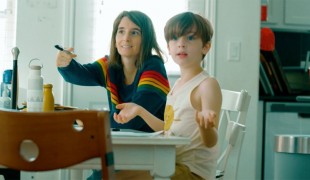- 8215
- 538
- 7
- 12
- 3
- Help Ukraine
About the solution
Williams Syndrome is a rare genetic disease that is characterised by mild to moderate intellectual disability or learning problems, unique personality characteristics, distinctive facial features, and heart and blood vessel (cardiovascular) problems.
Craig’s daughter, Imogen, was born with Williams Syndrome, compromising her learning skills and concentration. Craig realised that using a virtual reality (VR) headset was a big help for his daughter.
“I noticed how well she adapted to it... So I knew she’d like to see more.”, Craig said.
Craig did not stop there. He started working on his own VR experience and created a set of videos with different themes, each lasting around four to six minutes. He created videos on diving under water, space and stars observation and visiting animals. As loud noises are stress factors for Imogen all the videos are complemented with calm music, animal sounds and more. This experience helped Imogen to relax and also to stimulate her brain activity.
“The scene was magical to witness,” Craig said. “It brought a tear to my eye because she was showing signs of improved development and progression in learning. She started doing things we didn’t think she could do.”, Craig mentioned.
Craig wanted to do more, so he decided to tried his experience with other children at his daughter’s school and found similar reactions. It proven that it helps aid the child development and progression in learning, but also helps them feel relaxed.
“Each child loved the project again,” he said.
Craig is now trying to take the project further. He created I.M.M.E (Imagine Making Memories Everywhere) and launched crowdfunding campaigns to continue developing his project.
Adapted from: https://www.bbc.com/news/av/education-45983010/dad-creates-vr-world-to-h...
More info: https://immemedia.wixsite.com/immemedia
https://www.youtube.com/watch?v=D1RaT6AQDGo
这些解决方案不应包括使用药物,化学品或生物制品(包括食品);创伤性设备;冒犯性的,商业或内在危险的内容。该解决方案未经医学验证。请谨慎进行!如果您有任何疑问,请咨询健康专家。
DISCLAIMER: This story was written by someone who is not the author of the solution, therefore please be advised that, although it was written with the utmost respect for the innovation and the innovator, there can be some incorrect statements. If you find any errors please contact the patient Innovation team via info@patient-innovation.com
-
• Wed, 08/13/2025 - 09:19
在 2021 年被正式诊断出患有多发性硬化症之前,我已经与该病共处多年。我每年都会接受核磁共振检查,由于副作用,我没有服用任何药物。2021 年我的病情突然发作一次。我的腿突然断了,腰部以下麻木。我决定尝试 MS-4。几周后,麻木和肌肉痉挛消失了,但花了将近 3 个月的时间才能够不用拐杖正常行走。到六月,就平安度过了四年,我非常高兴我做出了不服用任何药物并尝试 MS-4 配方的决定,尽管我的神经科医生很不高兴,其中一位告诉我辞职,因为我会残疾。好吧,我没有残疾,我仍然拒绝服用那些药物,我做得很好。相信自己,相信你的直觉。医生并非无所不知。我很惊讶很多患有 MS 的人都没有听说过 MS-4 协议,请访问 uinehealthcentre.net,希望对您有所帮助
-
-
763
-
0
-
17044

Proloquo2Go – App to help people communicate
CAREGIVING
COMMUNICATION: Communicating, whether by speaking, listening, or other means
Social interaction
Paralysis
Autism
Cerebral Palsy
Brain Stroke
Brain Injury (Abscess, Brain Barrier Defect, Brain Contusion, Brain Hemorrhage, Brain Edema)
Assistive Daily Life Device (to help ADL)
Assistive Technology access
App (Including when connected with wearable)
Tremors
Muscle cramps or spasms
Difficulty coordinating movements
Muscle weakness
Difficulty speaking or understanding speech
Trouble with fine motor skills (e.g., writing, buttoning clothes)
Twitching or involuntary movements (myoclonus)
Acquired language impairment (Aphasia)
Promoting self-management
Managing Neurological Disorders
Building Supportive Community Relationships
Promoting inclusivity and social integration
Improving Speech and Communication
Caregiving Support
Clinical Pathology
Medical Genetics
Neurology
Pediatrics
Rheumatology
Netherlands
-
-
-
964
-
0
-
20964

跟踪自闭症儿童的系统
CAREGIVING
COMMUNICATION: Communicating, whether by speaking, listening, or other means
Social interaction
Autism
Assistive Daily Life Device (to help ADL)
Body-Worn solutions (Clothing, accessories, shoes, sensors...)
App (Including when connected with wearable)
Anxiety
Difficulty concentrating or making decisions
Social withdrawal or isolation
Restlessness or feeling slowed down
Loss of interest or pleasure in activities (anhedonia)
Promoting self-management
Managing Neurological Disorders
Preventing (Vaccination, Protection, Falls, Research/Mapping)
Caregiving Support
Child and Adolescent Psychiatry
Medical Genetics
Neurology
Pediatrics
Psychiatry
Israel
-
-
-
261
-
0
-
2918

Mother Eileen Lamb implemented a series of voice assistant-driven strategies to support her raising her two autistic children.
COMMUNICATION: Communicating, whether by speaking, listening, or other means
CAREGIVING
Social interaction
(SELF)-CARE: GROOMING: Personal grooming, such as combing hair or shaving
Autism
Strategy/Tip
AI algorithm
Promoting self-management
Managing Neurological Disorders
Promoting inclusivity and social integration
Improving Speech and Communication
To improve Treatment/Therapy
Preventing (Vaccination, Protection, Falls, Research/Mapping)
Caregiving Support
Child and Adolescent Psychiatry
General and Family Medicine
Neurology
Pediatrics
United States
-
 zh
zh
Salomé Azevedo • Fri, 12/07/2018 - 10:33